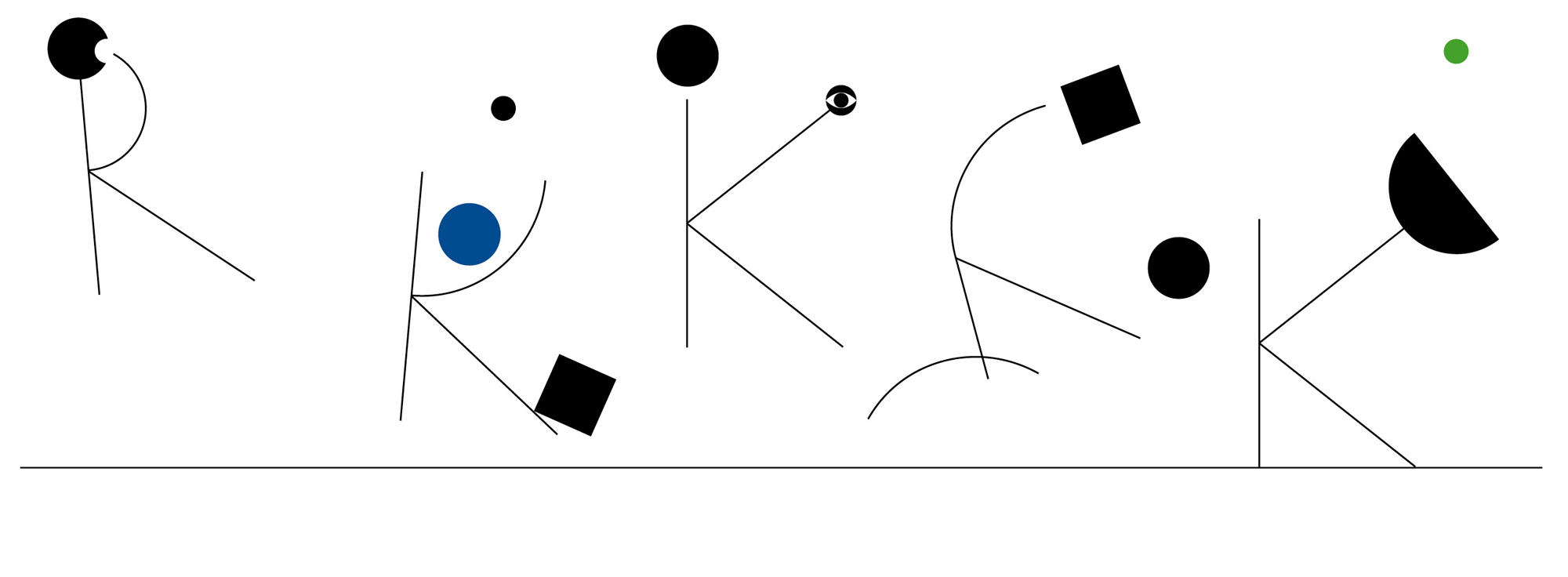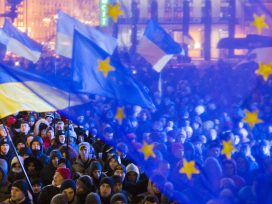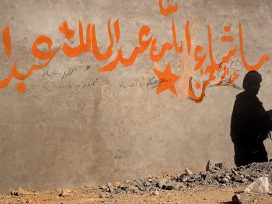The “Kyiv Biennial 2015 – The School of Kyiv” was a profound consideration of Europe and Ukraine’s place in it. Developments since then, however, mean that Kiev is no longer the “city of Europe’s hope”, writes Kateryna Mishchenko.
For two months in fall 2015, Kyiv was turned into a cultural-political laboratory for the study of questions on the future of Ukraine and Europe. The Kyiv Biennial 2015 – The School of Kyiv, organized by the Visual Culture Research Center (VCRC), opened its classrooms in twenty different spots around the Ukrainian capital and convened the classes of its six “schools”: the Schools of Realism, Landscape, Image and Evidence, the Displaced, and Abducted Europe. The enlightenment intension of its name had a very real dimension: workshops, seminars and lectures could be said to be the main component of the biennial. If the artistic program took as its starting point the didactic practices of Kazimir Malevich and Aleksandra Ekster, the discursive program (although it must be noted that such a division in the context of contemporary art is often conditional) took a bold intellectual course: it invited Europe to its periphery and suggested learning from Kyiv and in Kyiv for the sake of building an alternative European utopia. The School of Abducted Europe featured 27 events/lectures, conversations and panel debates with prominent intellectuals, academics, artists and journalists, whose participation became possible thanks to cooperation with the Institute for Human Sciences (IWM) and its Ukraine in European Dialogue Program.

Source: http://www.biennialfoundation.org/2015/06/the-school-of-kyiv-kyiv-biennial-2015-opening-september-2015-announces-venues-schools-and-first-international-participants/
And thus, nearly every day the School of Abducted Europe became a vibrant international discussion space – “What Europe does Ukraine need?”, “Mainstreaming the Far Right in Europe,” “How to make a war,” “Who is afraid of Gayropa?”, “Making a space of knowledge: the cities of free universities” and so on. In the history of independent Ukraine there had decidedly never been such a profound and lengthy consideration of Europe and our country’s place in it. After the space at the center of Kyiv was physically filled with the European idea in the winter of 2013–2014, it became necessary to place this idea in time, or in other words to transform that powerful impulse into an adequate long-term discourse.
This is probably the most urgent and serious task facing the cultural field in Ukraine in general, a task which the School of Kyiv was particularly enthusiastic about taking on – after all, the School sees its roots precisely in the agora of the Maidan. The need to react instantly and act quickly during the protests gave way to a need for more precise concepts and reflection on the socio-political context, a need which – as is well known – remains acute. The acceleration of Ukrainian life increasingly makes clear the many ways in which Kyiv has failed to make a break with the old status quo three years after the Maidan. Outwardly, Kyiv less and less resembles the city of Europe’s hope, as the biennial’s curators, Hedwig Saxenhuber and Georg Schöllhammer, termed it.
It is thus all the more important, perhaps, to remember the lessons learned from this, the most interesting cultural event of the post-Maidan era. The first lesson is visual. You overcome your grief over things left undone or invisible by creating new images. The iconoclasm of de-communization, media propaganda, and rightwing and conservative mobilization are radically depleting the arsenal of images at hand, so that it is impossible to speak of new ones. Thus the battle over imagination is as relevant as ever.
And the second lesson: more is more. The biennial’s desire to sate the intellectual deficit and slake the cultural thirst of many years was funnelled into such a number of events that none of its guests could possibly take them all in. Besides the fervour for the event, which takes us back to the experience of the Maidan, this excess can be read as an attempt to put an end to the local fragmentation of cultural life in general and intellectual expression in particular. Transgressing the horizon of expectation for the local context, the School of Kyiv also went beyond the geographical boundaries of Ukraine: its events have also taken place in Vienna, Leipzig, Athens, Amsterdam, Paris, Sofia, Karlsruhe, and Tbilisi.
The excessiveness and occasional under-appreciation of the School of Kyiv strikes me as useful in drawing an enticing parallel: reading Ukraine as its own sort of surplus for a renewed vision of the European continent. Kyiv was where an event started that sought to become the promise of a restart for Europe. Europe, in turn, must urgently become a bigger and better place for human life. That’s obvious, isn’t it? But how should the contours of this new picture be seen? It seems that its lines are on the verge of withering against a backdrop of crises and fatigue. At a minimum, the next biennial in Kyiv will continue its politics of excess and try to include everyone looking for a new future in our troubled times.
Published 24 January 2017
Original in English
First published by IWM post No 118 (Fall/Winter 2016)
Contributed by Transit © Kateryna Mishchenko / IWM / Eurozine
PDF/PRINTIn collaboration with
In focal points
- Not epistemic enough to be discussed
- Another lost generation of art?
- A trace of Russia at the heart of Austria
- What makes a humanist kill?
- Something happens, somewhere
- Vertical occupation
- No longer a footnote
- The Ides of March
- Counteroffensive exhibitions
- No peace without freedom, no justice without law
Newsletter
Subscribe to know what’s worth thinking about.
Related Articles

An emotive rift exists between being drafted and signing up for military service. Those who prioritize family responsibilities, education and skills, and non-violence aren’t backing the opposition. Defence comes in many forms. Could lessons from Ukraine’s mobilization inform the recruitment challenges potentially facing the rest of Europe?

For those who suffered the consequences of Yalta’s division of Europe, the Helsinki Final Act brought grounds for optimism. Today, as Russia’s regressive war on Ukraine reopens old conflicts, it stands as a monument to European modernity.






